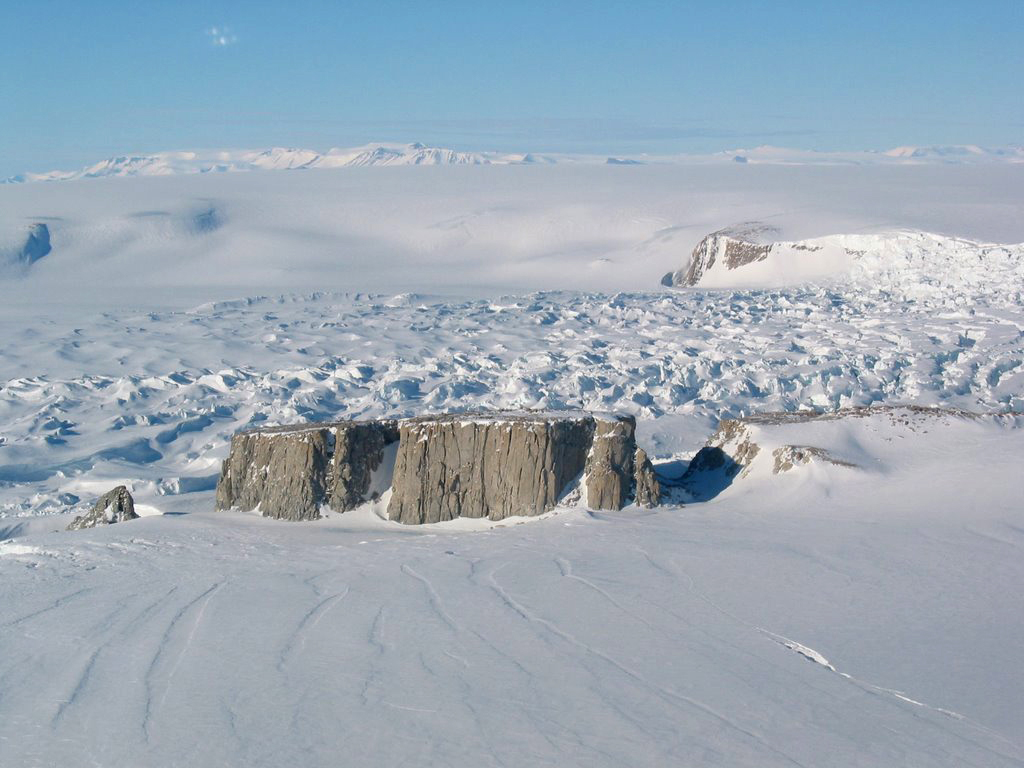Starr Nunatak on:
[Wikipedia]
[Google]
[Amazon]
The Whitmer Peninsula () is a broad ice-capped peninsula, about long and wide, between Cheetham Ice Tongue and Harbord Glacier Tongue on the coast of
 Features of the peninsula and nearby terrain include:
Features of the peninsula and nearby terrain include:

Victoria Land
Victoria Land is a region in eastern Antarctica which fronts the western side of the Ross Sea and the Ross Ice Shelf, extending southward from about 70°30'S to 78th parallel south, 78°00'S, and westward from the Ross Sea to the edge of the Ant ...
, Antarctica.
Location
The Whitmer Peninsula is on the west coast of the Ross Sea. Kohler Head is on its northeast coast. It is south of the Cheetham Ice Tongue and Lamplugh Island, east of the Davis Glacier and north of the Harbord Glacier, which flows between Starr Nunatak and Varney Nunatak into the sea, where it forms the Harbord Glacier Tongue.Exploration and naming
The Whitmer Peninsula was mapped byUnited States Geological Survey
The United States Geological Survey (USGS), founded as the Geological Survey, is an agency of the U.S. Department of the Interior whose work spans the disciplines of biology, geography, geology, and hydrology. The agency was founded on Mar ...
(USGS) from surveys and United States Navy
The United States Navy (USN) is the naval warfare, maritime military branch, service branch of the United States Department of Defense. It is the world's most powerful navy with the largest Displacement (ship), displacement, at 4.5 millio ...
air photos, 1957–62.
It was named by the United States Advisory Committee on Antarctic Names
The Advisory Committee on Antarctic Names (ACAN or US-ACAN) is an advisory committee of the United States Board on Geographic Names responsible for recommending commemorative names for features in Antarctica.
History
The committee was established ...
(US-ACAN) for Lieutenant (j.g.) R.D. Whitmer, U.S. Navy, who wintered over at Williams Field
Williams Field or Willy Field is a United States Antarctic Program airfield in Antarctica. Williams Field consists of two snow runways located on approximately 8 meters (25 ft) of compacted snow, lying on top of 8–10 ft of ice, floa ...
, McMurdo Sound
The McMurdo Sound is a sound in Antarctica, known as the southernmost passable body of water in the world, located approximately from the South Pole.
Captain James Clark Ross discovered the sound in February 1841 and named it after Lieutenant ...
, in 1956.
He returned to Antarctica with United States Naval Construction Battalion units during Deep Freeze 1966 and 1967.
Features
 Features of the peninsula and nearby terrain include:
Features of the peninsula and nearby terrain include:Kohler Head
. A small headland on the northeast side of Whitmer Peninsula. Mapped by theUnited States Geological Survey
The United States Geological Survey (USGS), founded as the Geological Survey, is an agency of the U.S. Department of the Interior whose work spans the disciplines of biology, geography, geology, and hydrology. The agency was founded on Mar ...
(USGS) from surveys and United States Navy air photos, 1957–62.
Named by the United States Advisory Committee on Antarctic Names
The Advisory Committee on Antarctic Names (ACAN or US-ACAN) is an advisory committee of the United States Board on Geographic Names responsible for recommending commemorative names for features in Antarctica.
History
The committee was established ...
(US-ACAN) for John L. Kohler, United States Navy, construction electrician at McMurdo Station, 1965-66 and 1966-67.
Harbord Glacier
. A glacier flowing along the south side of Mount George Murray. It enters the Ross Sea south of Whitmer Peninsula where it forms Harbord Glacier Tongue. The name derives from the glacier tongue, which was named by Ernest Shackleton for A.E. Harbord, second officer of the Nimrod during the last year of the British Antarctic Expedition, 1907-09.
Starr Nunatak
. A conspicuous nunatak marking the north side of the mouth of Harbord Glacier. Mapped by the USGS from surveys and United States Navy air photos, 1957-62. Named by US-ACAN for James W. Starr, United States Navy, steelworker at McMurdo Station, 1966 and 1967 summer seasons.Varney Nunatak
. An ice-free nunatak at the south side of the mouth of Harbord Glacier. Mapped by the USGS from surveys and United States Navy air photos, 1957-62. Named by US-ACAN for Kenneth L. Varney, United States Navy, Equipment Operator at McMurdo Station during the 1965-66 and 1966-67 summer seasons.Harbord Glacier Tongue
. A glacier tongue forming the seaward extension of Harbord Glacier on the coast of Victoria Land. First charted by the British Antarctic Expedition under Shackleton, 1907-09, at which time it extended about into the Ross Sea. Named by Shackleton for A.E. Harbord, second officer of the Nimrod for the last year of the expedition.References
Sources
* * {{Authority control Peninsulas of Victoria Land Scott Coast